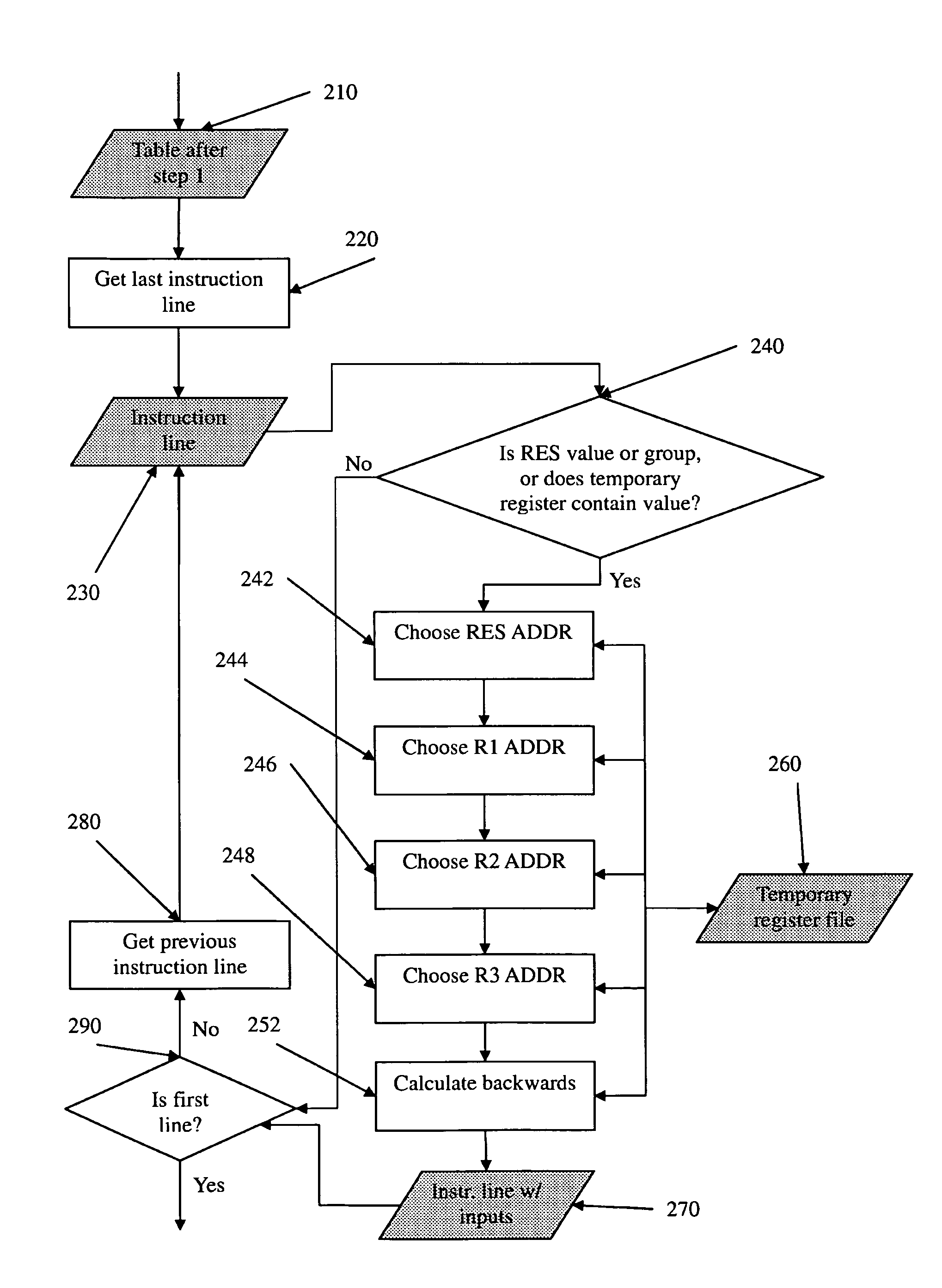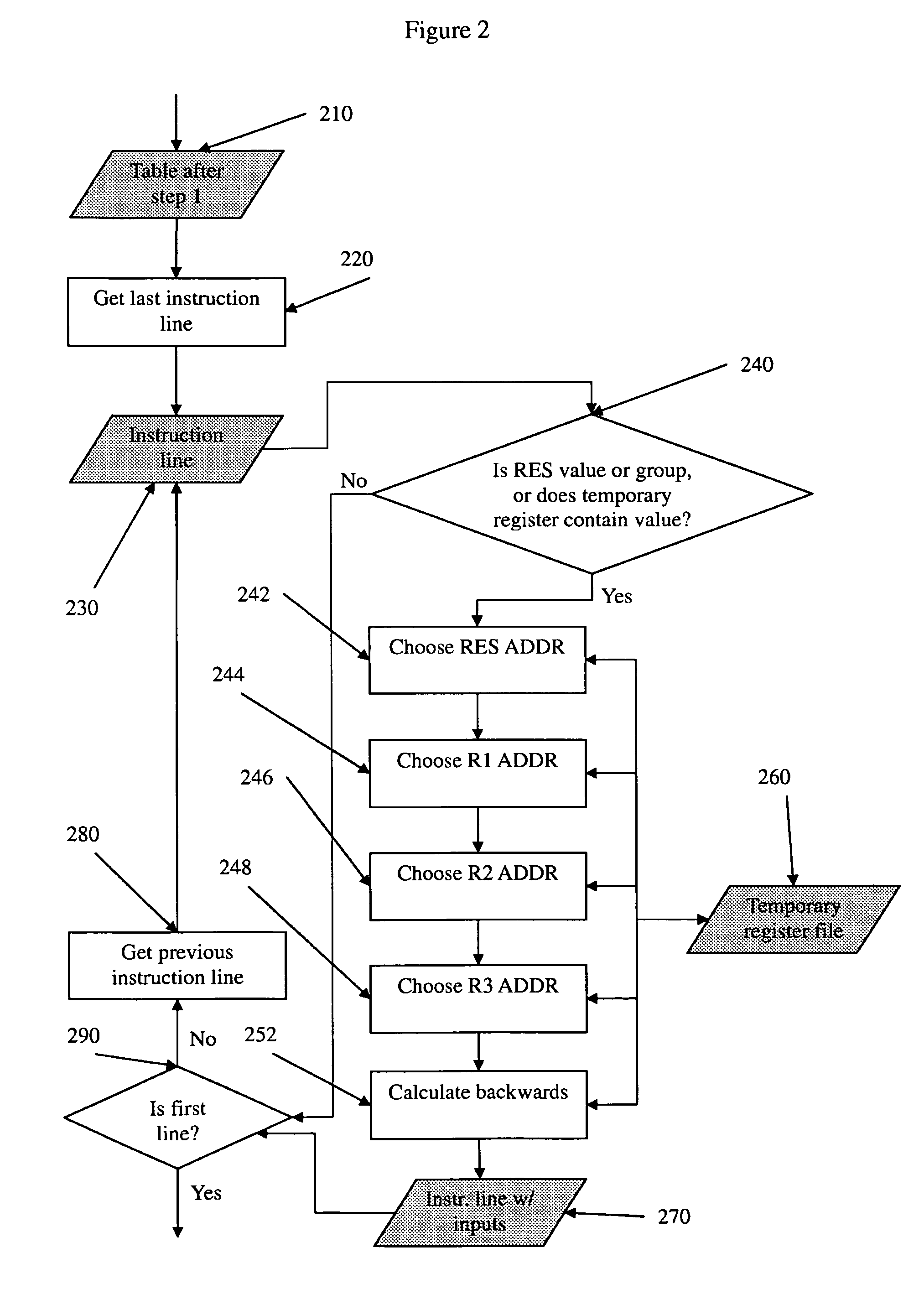Test case generation with backward propagation of predefined results and operand dependencies
a test case and predefined result technology, applied in the direction of program control, computation using denominational number representation, instruments, etc., can solve the problems of inability to generate interesting test cases with full control over their generation, slow performance, and inability to generate interesting test cases. achieve fast and powerful test case generation, precise and flexible
- Summary
- Abstract
- Description
- Claims
- Application Information
AI Technical Summary
Benefits of technology
Problems solved by technology
Method used
Image
Examples
Embodiment Construction
[0022]Referring now to the drawings, and more particularly to FIGS. 1-5, there are shown exemplary embodiments of the method and structures according to the present invention.
[0023]In an exemplary method, in order to generate a test case, the user would exemplarily specify an input file. This input file contains a test case structure with one line for each instruction of the instruction sequence that is to be generated. Each line would consist of the following fields: instruction mnemonic, input operand 1, input operand 2, input operand 3, result, result address, register address 1, register address 2, register address 3, and additional instruction fields as required by the processor architecture.
[0024]For each line of the input file, the user could specify anything from no fields to all fields, including the result field. The user may also reference certain predefined instruction groups and operand groups. For example, exemplary instruction groups may include any of the following i...
PUM
 Login to View More
Login to View More Abstract
Description
Claims
Application Information
 Login to View More
Login to View More - R&D
- Intellectual Property
- Life Sciences
- Materials
- Tech Scout
- Unparalleled Data Quality
- Higher Quality Content
- 60% Fewer Hallucinations
Browse by: Latest US Patents, China's latest patents, Technical Efficacy Thesaurus, Application Domain, Technology Topic, Popular Technical Reports.
© 2025 PatSnap. All rights reserved.Legal|Privacy policy|Modern Slavery Act Transparency Statement|Sitemap|About US| Contact US: help@patsnap.com



